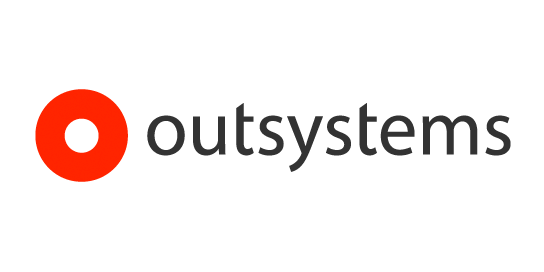
OutSystems Platform
OutSystemsExternal reviews
1,415 reviews
from
and
External reviews are not included in the AWS star rating for the product.
How OutSystems can improve your life and why you should adopt it!
What do you like best about the product?
How easy it is to create and test new applications. From the smallest quality of life tool to the largest enterprise platform, nothing is too much or too hard with OutSystems
What do you dislike about the product?
The licensing conditions can sometimes hinder sales processes but other then that... I'm 100% sold
What problems is the product solving and how is that benefiting you?
OutSystems is allowing people from outside the tech world to enter IT and provide additional input and value!
OutSystems leading and adapting to the market
What do you like best about the product?
OutSystems has made a smart turnaround by bringing back support for OutSystems 11 (O11) — a move that reassured long-time users and showed responsiveness to real enterprise needs. Alongside that, its integration of AI tools like the AI Mentor System and AI Agent Builder is helping teams build faster, with better quality and governance. The platform is evolving beyond traditional low-code, embracing cloud, DevOps, and team enablement. While complexity and pricing transparency still need attention, OutSystems is clearly adapting well — not just keeping up with the market, but actively shaping the future of enterprise app development.
What do you dislike about the product?
I’m still learning about it and ejoying everything of it. Lots to come ahed
What problems is the product solving and how is that benefiting you?
As a non tech person it gave me the chance to work in it. Which was great
My experience is mostly great. With OutSystems you can create outstanding applications.
What do you like best about the product?
This platform offers high-performance, low-code solutions designed for enterprise applications where reliability is crucial. It is fast, scalable, and built to be futureproof.
What do you dislike about the product?
The platform is fast, easy to use, and adaptable to specific needs, making it well-suited for enterprise environments.
What problems is the product solving and how is that benefiting you?
Legacy applications have been transformed into state-of-the-art modern applications.
User Friendly
What do you like best about the product?
I like its intuitive and user friendly interface. I’ve been developing with Outsystems for only about two weeks and in those two weeks I’ve found to have developed quite a lot of skills. If it weren’t for its intuitiveness I would probably struggle quite a bit. I feel powered to do application seamlessly while applying my technical background.
What do you dislike about the product?
The app lacks integrated AI features that could assist with development.
What problems is the product solving and how is that benefiting you?
Fast development. Building apps with little to no code. I enjoy UI/UX more :)
Code deploymentsQ
What do you like best about the product?
Outsystems allows me to make deployments with ease without having to worry about its complexities
What do you dislike about the product?
3rd party code analisys is hard to do, we have to relly on Outsystems to do this checks
What problems is the product solving and how is that benefiting you?
It is easy and fast to develop something
OutSystems powering Government Enterprise Solutions in PH
What do you like best about the product?
the adaptability of the framework to the changing demands of the business operations.
What do you dislike about the product?
The cost involved in building a system for third world countries is an important consideration.
What problems is the product solving and how is that benefiting you?
the ability to build solutions quickly and easy to PIVOT when change happen.
Fast devolpment
What do you like best about the product?
The software enables rapid development and is easily scalable.
What do you dislike about the product?
The publishing process is slow, and the tool does not handle complex scenarios effectively.
What problems is the product solving and how is that benefiting you?
Billing system in aviation. Helps me develop what business needs really fast.
First it feels strange, then it becomes ingrained.
What do you like best about the product?
The product provides increased productivity, reduced errors, scalability, and features an excellent UI/UX interface.
What do you dislike about the product?
The investment in the license only proves viable and profitable when applied to medium to large-scale projects.
What problems is the product solving and how is that benefiting you?
Facilitate the programming process and allow more freedom to create and ideate.
Great way to develop
What do you like best about the product?
It is very intuitive and fast way to develop and deploy applications.
What do you dislike about the product?
That is very company centered. A person or small business applications would be a plus.
What problems is the product solving and how is that benefiting you?
Already built applications for banking, retail, personal benefits, registration.
Great System
What do you like best about the product?
It is a great low code platform. Responds to feedback and provides support. Easy deployment, debugging and developing.
UX can be great and logic and integrations too.
UX can be great and logic and integrations too.
What do you dislike about the product?
Nothing at all. It is really great to work with
What problems is the product solving and how is that benefiting you?
Help migrate legacy systems to new applications
showing 71 - 80